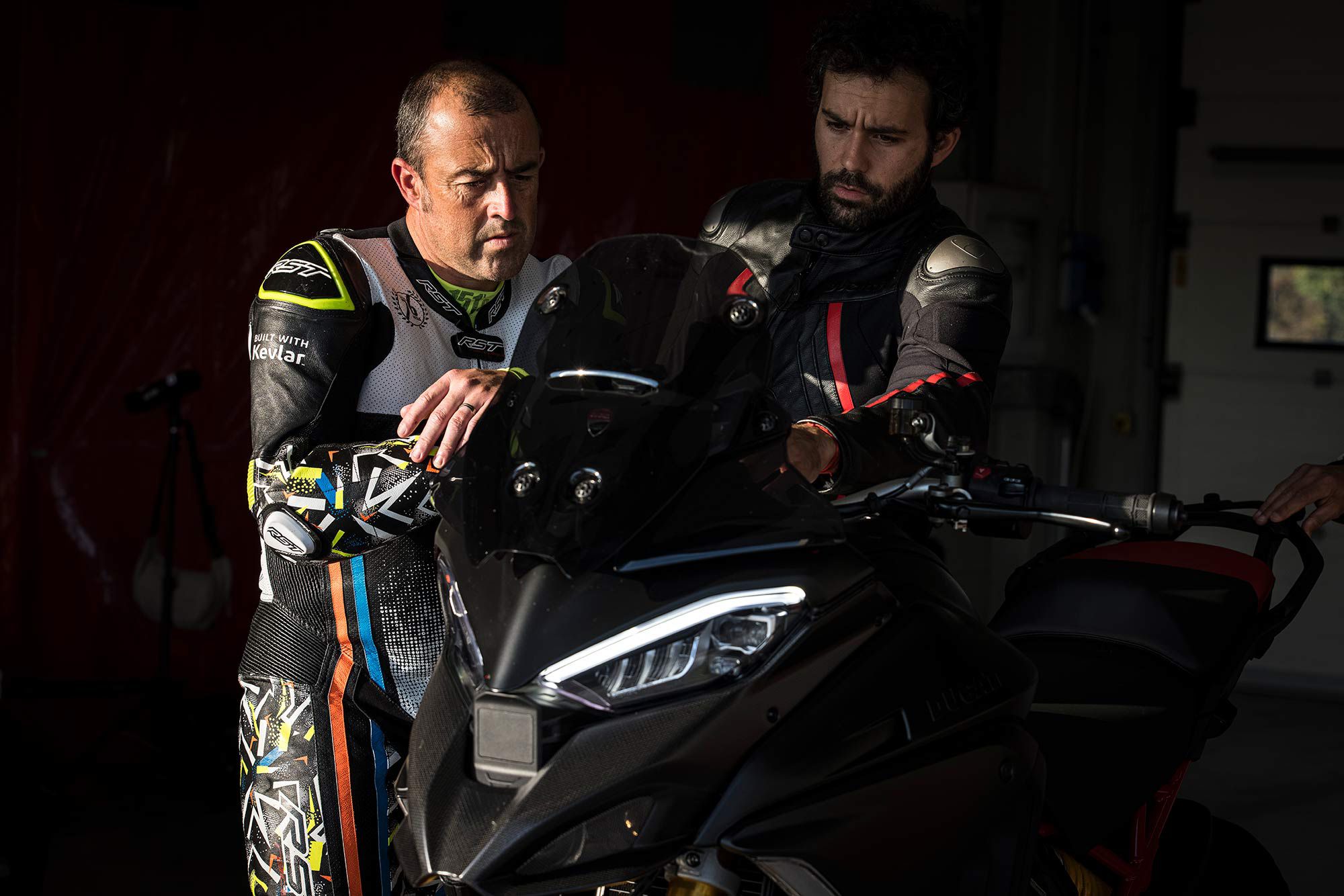
This is an unusual test. Ducati’s Multistrada V4 Pikes Peak hasn’t been officially announced, meaning this was a blind test of a prototype—with the first production Pikes Peak due to be officially revealed at the end of this year. The original Pikes Peak bike (read the EICMA 2015: First Look at the 2016 Ducati Multistrada Enduro & Pikes Peak article) was produced as a homage to Ducati’s success at the world-famous hill climb, which the marque famously won in 2018 with the late Carlin Dunne at the helm. Now with 17-inch wheels the 2022 V4 should be the most track-focused Multistrada we’ve yet seen.
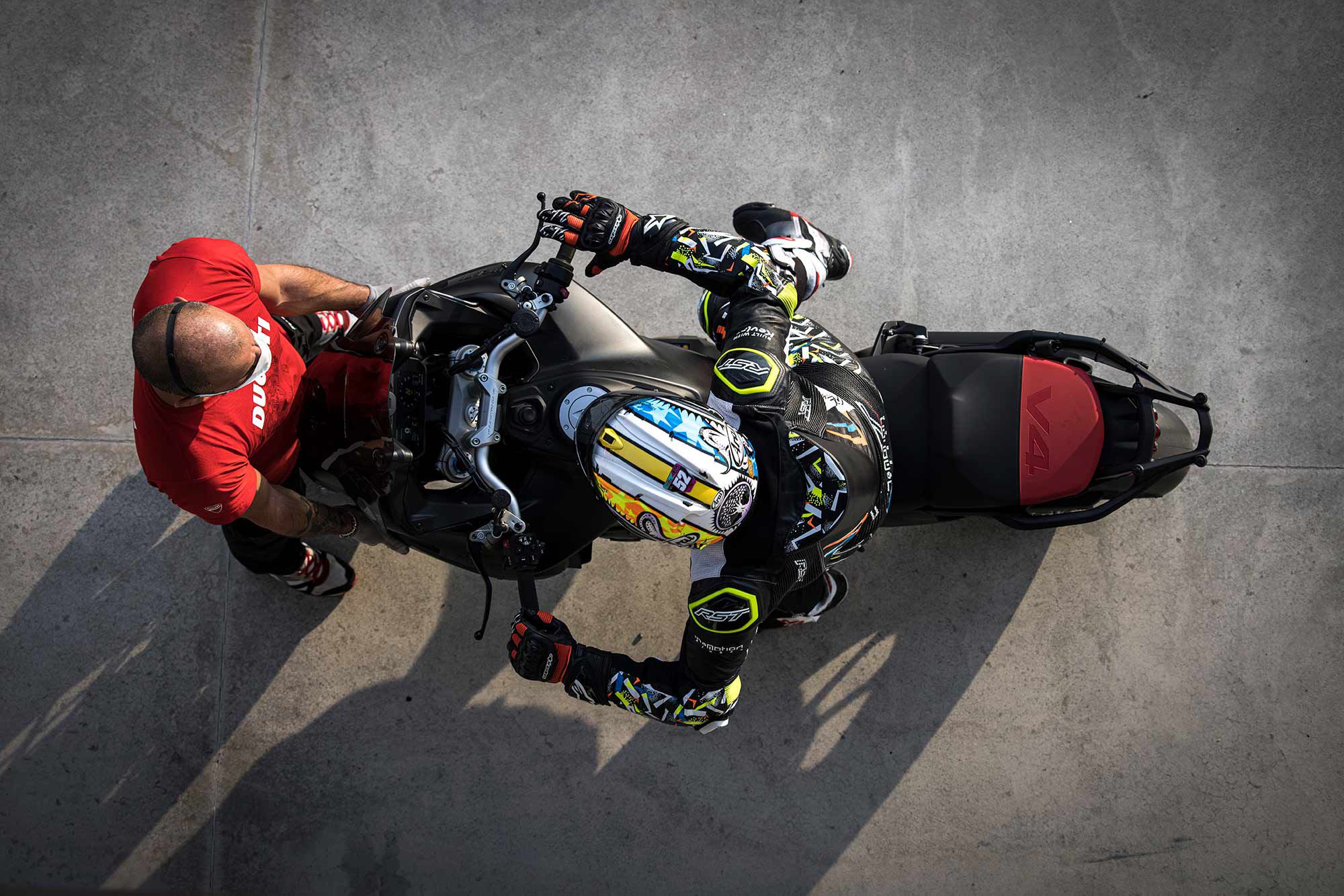
Editor’s note: We have reported on the Multistrada V4 equipped with 19/17-inch wheels extensively during the 2021 Ducati Multistrada V4 S MC Commute Review, Is Ducati’s Multistrada V4 the Fastest Adventure-Touring Bike? and 2021 Ducati Multistrada V4 S First Ride Review motorcycle review articles and videos.
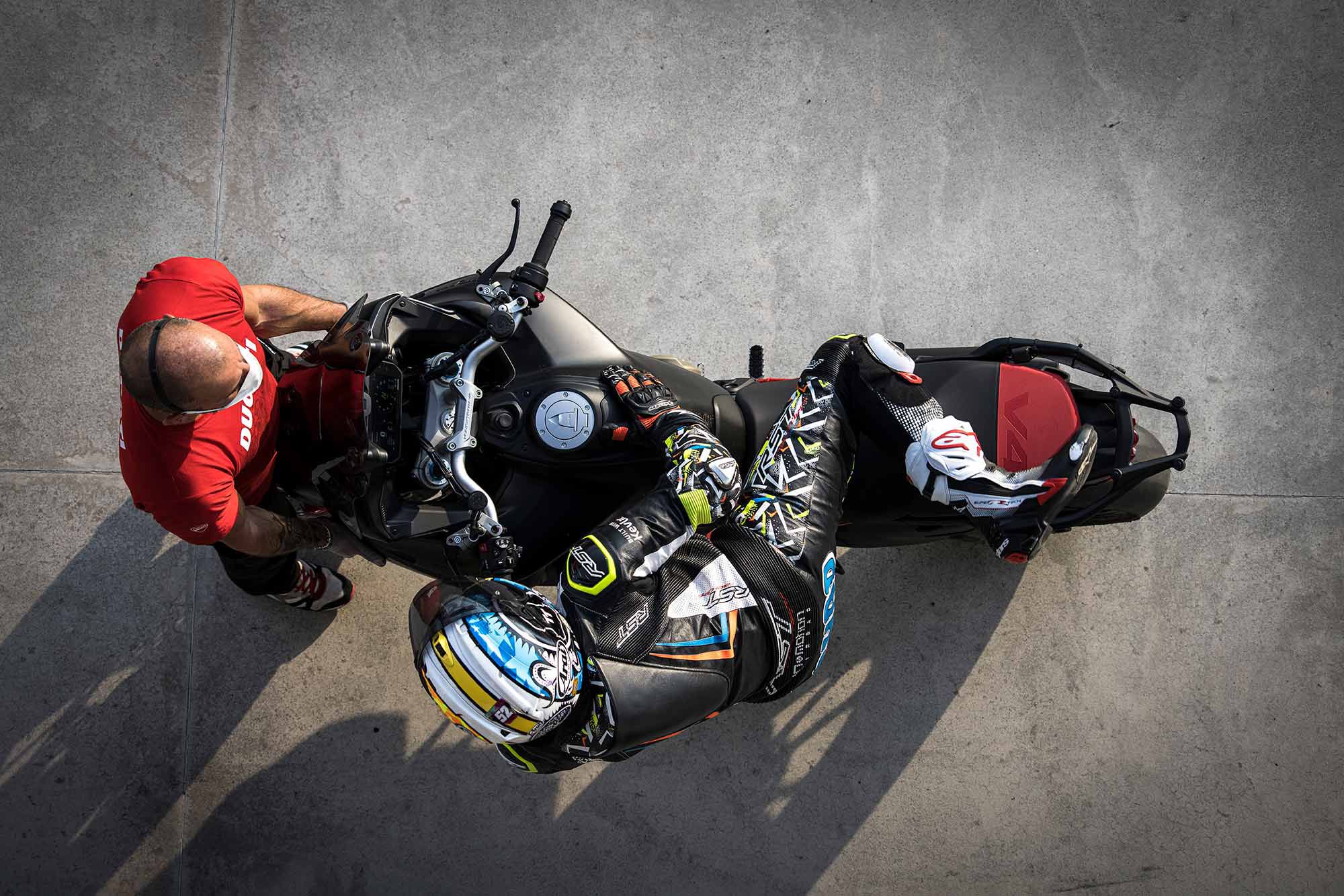
I was invited to the Modena circuit in northern Italy to test this new and exciting 17-inch-wheel machine. However, after several sessions, in perfect conditions, I can confirm that this promises to be the fastest Multistrada ever and should appeal to those who want a mixture of track performance as well as the Multi’s traditional comfort and ability over a meaningful distance.
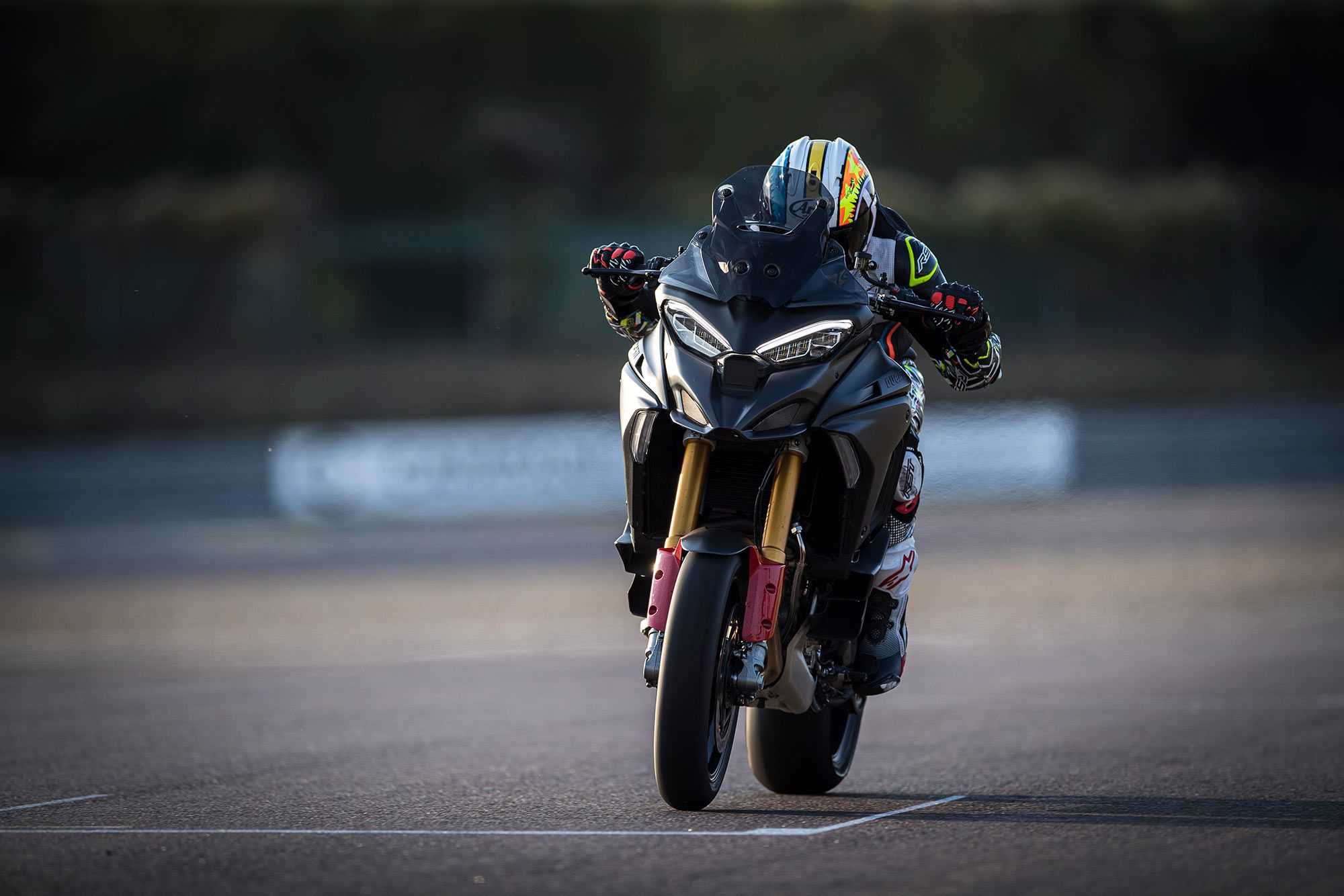
Ducati wouldn’t reveal any numbers, but the Pikes Peak’s Panigale-derived Granturismo V-4, now with conventional spring-operated valves, of course, and 36,000-mile valve-service intervals, is sure to have more kick than the older Pikes Peak’s Testastretta DVT L-twin. The current Multistrada V4′s 170 hp at 10,500 rpm is up from twin’s 158 hp at 9,500 rpm, and I expect Peak’s peak power to be the same or perhaps slightly higher—but not a dramatic change.
Related: Motorcycle Reviews And Comparisons
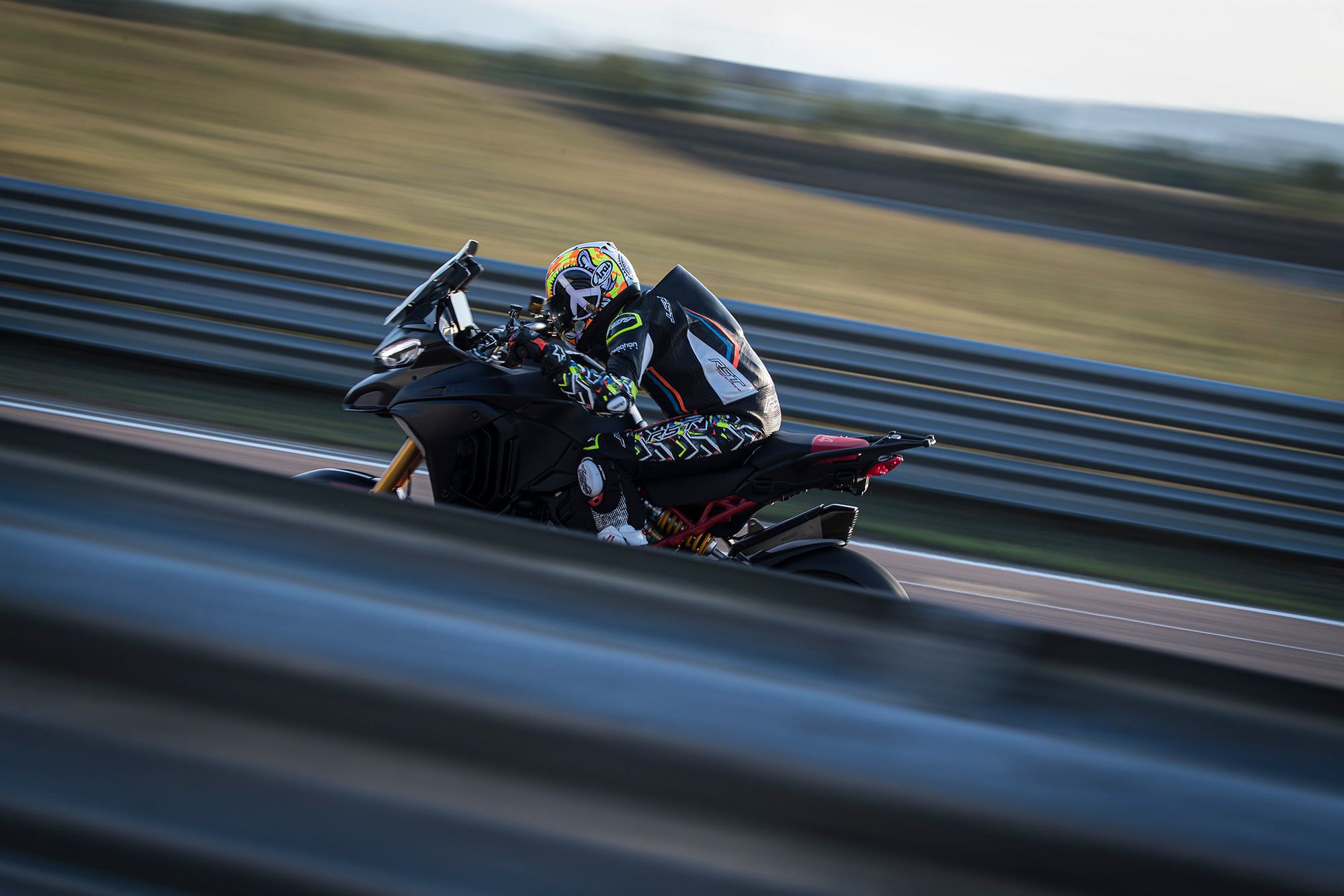
Ducati has opted for 17-inch wheels on the preproduction bike, which highlights both its track focus and new lack of off-road ambition (19-inch are used on the other V4 Multis). To show how serious Ducati is about its track intentions, the testbike was fitted with Pirelli SC1 slicks front and rear (120/70-17 front, 200/60-17 rear).
The Italians have also opted for semi-active Öhlins suspension, front and rear, instead of the electronic Skyhook Marzocchi items found on the 2021 Multi V4 S. The older twin-cylinder Pikes Peak ran conventional Öhlins units.
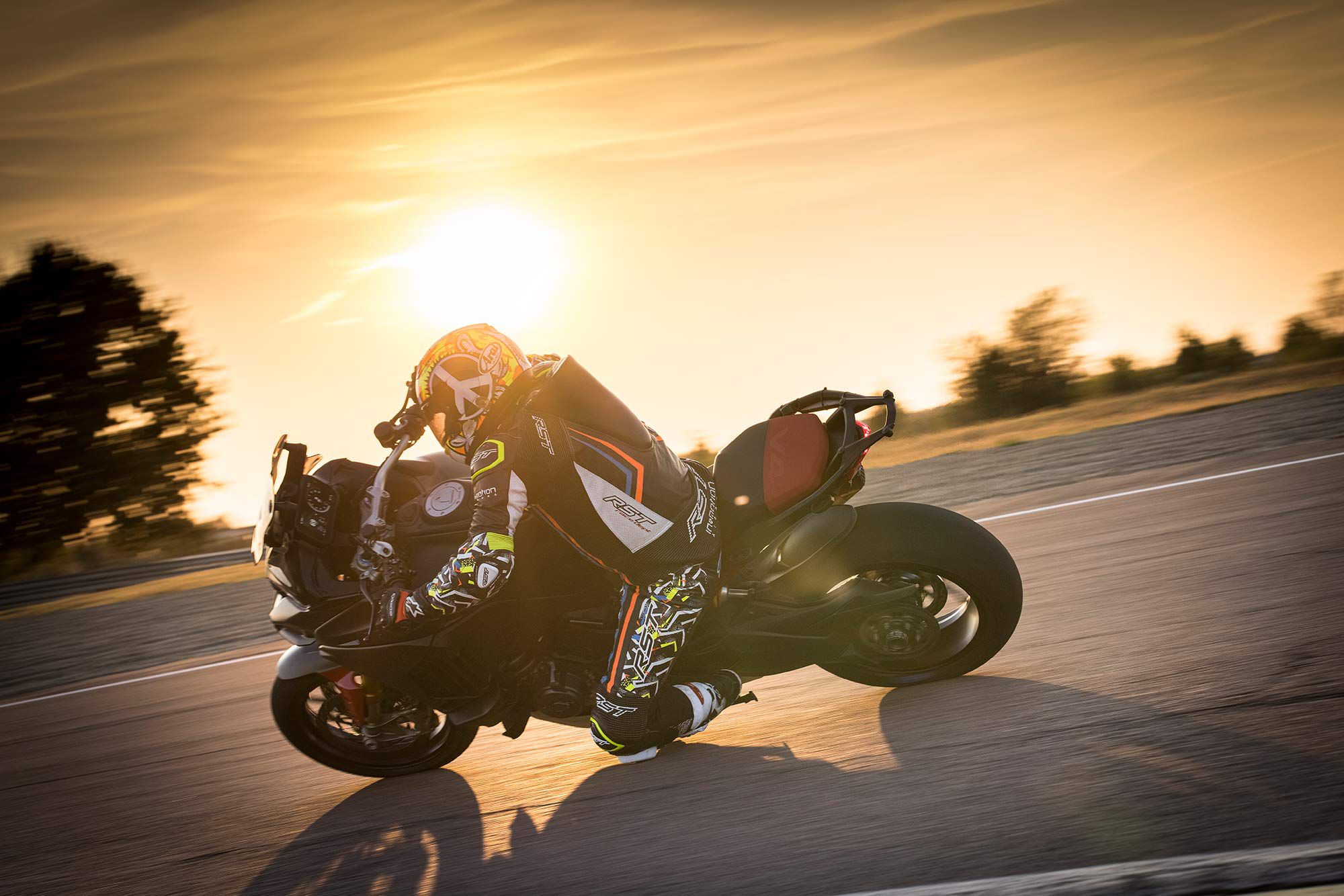
There are four riding modes to choose from: Race, Sport, Touring, and Urban. The Race mode has replaced the standard bike’s Enduro mode—in fact, there is no off-road option.
Sophisticated rider aids are linked to these modes, including lean-sensitive traction control and ABS, plus wheelie control. There’s also an up-and-down quickshifter. The prominent TFT dash highlights the riding mode, rider aids, and the preselected suspension setup, even the spring preload.
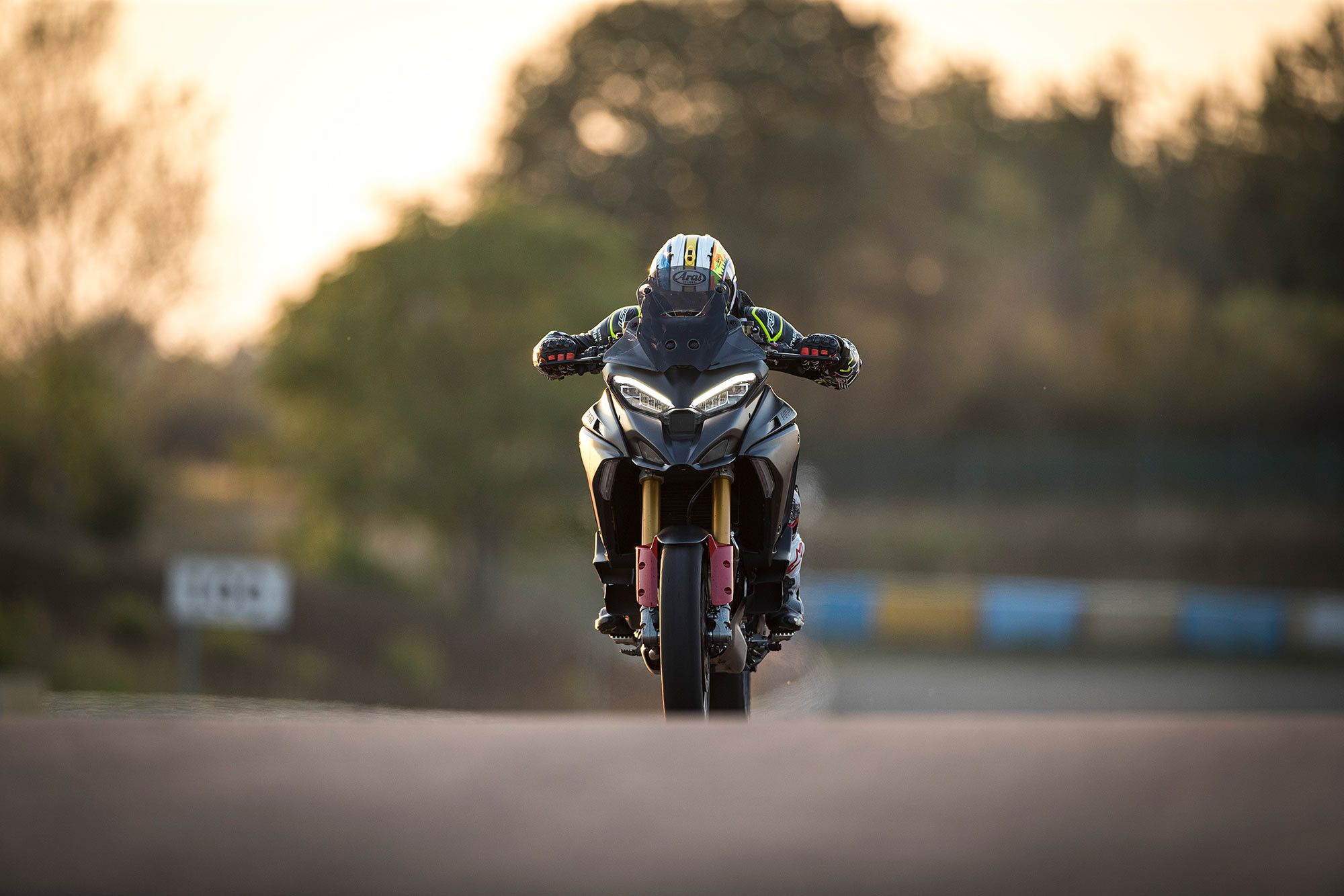
The radial-mounted Brembo Stylema brake calipers appear to be the same as those on the V4 S Multistrada, although the discs and brake pad material are likely to be different. Like the rider aids, the lean-sensitive ABS will have a different setting compared to the long-travel Multi V4.
I know this tight and twisty Modena track like the back of my hand, so lap one is used to scrub in the slicks, then it’s flat out, pushing for a fast lap. At the end of the straight, toward the top of fifth gear, it’s hard on the Brembo stoppers and back to second gear on the quickshifter’s auto-blipper. Stopping power is impressive, while the bike’s stability and control are equally good.
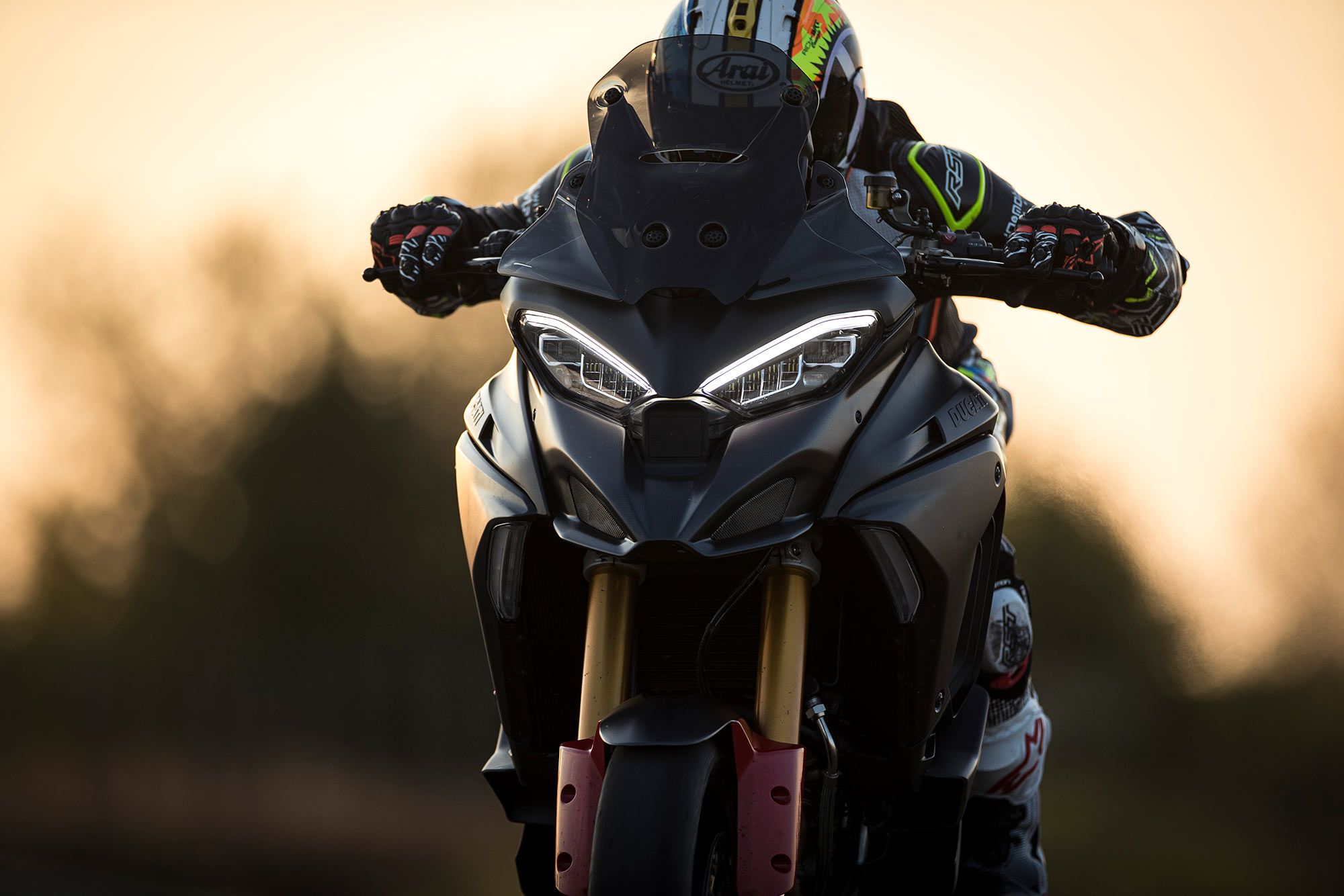
I thought the prototype might struggle on such a tight track, but it makes light work of even the second-gear turns. Knee-down left to knee-down right is so effortless it can’t just be down to the smaller-diameter wheels. I assume Ducati has reduced both unsprung weight and perhaps the bike’s overall weight too. It may also have moved the center of mass to sharpen the steering.
In Sport mode, power isn’t ferocious, and I suspect available torque is limited in the first two gears. It’s a quick bike but not harsh or aggressive. With the throttle against the stop, I can feel the rider aids controlling the front wheel lift in second gear—lovely.
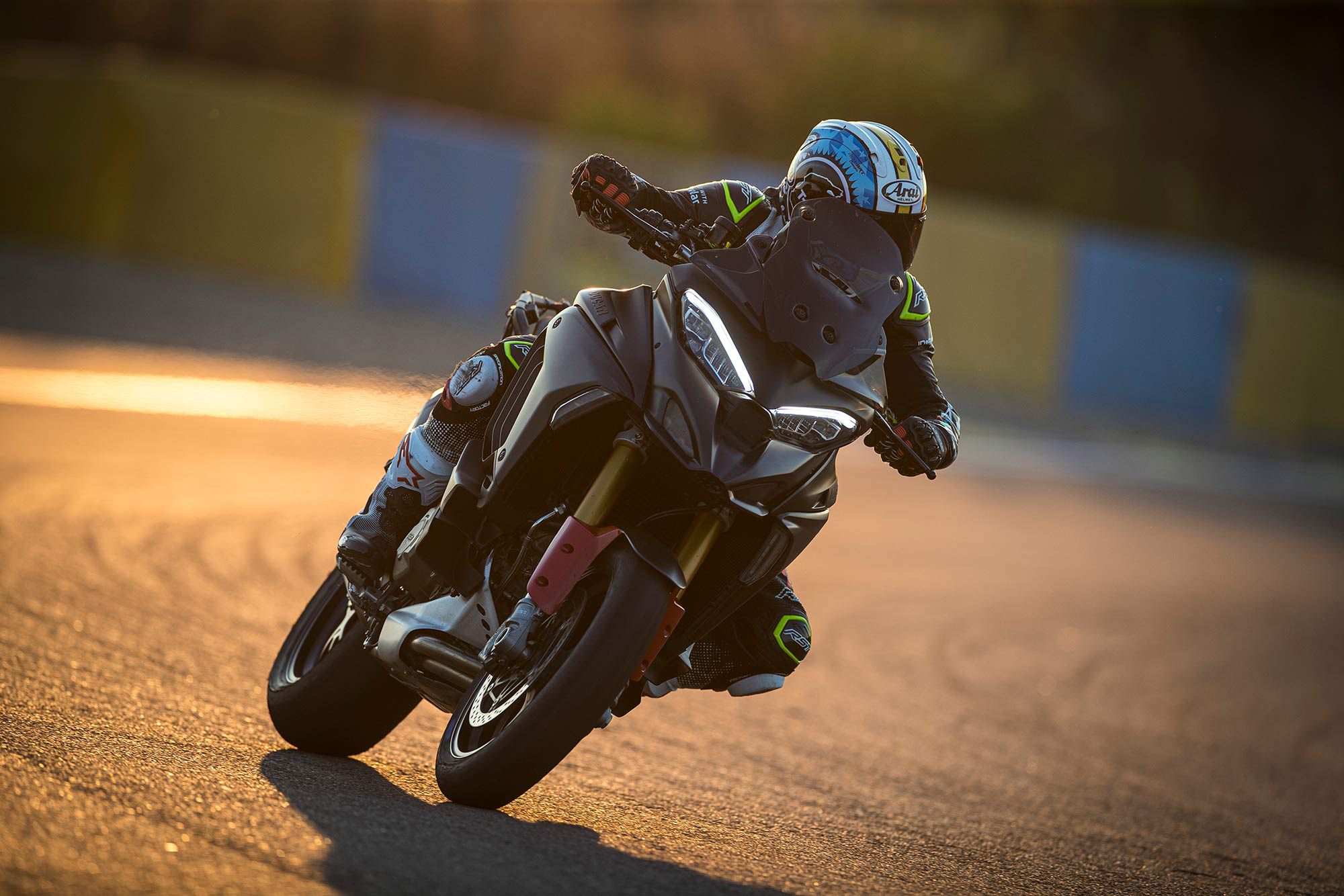
As you’d expect with Pirelli slicks and ideal weather conditions, grip isn’t an issue. Instead, the problem lies in getting used to carrying so much lean and corner speed on a bike originally designed to work off-road.
Sooner rather than later, pegs start to scrape and I begin to run a fraction wide of corner apexes, indicating the limit for the Sport mode.
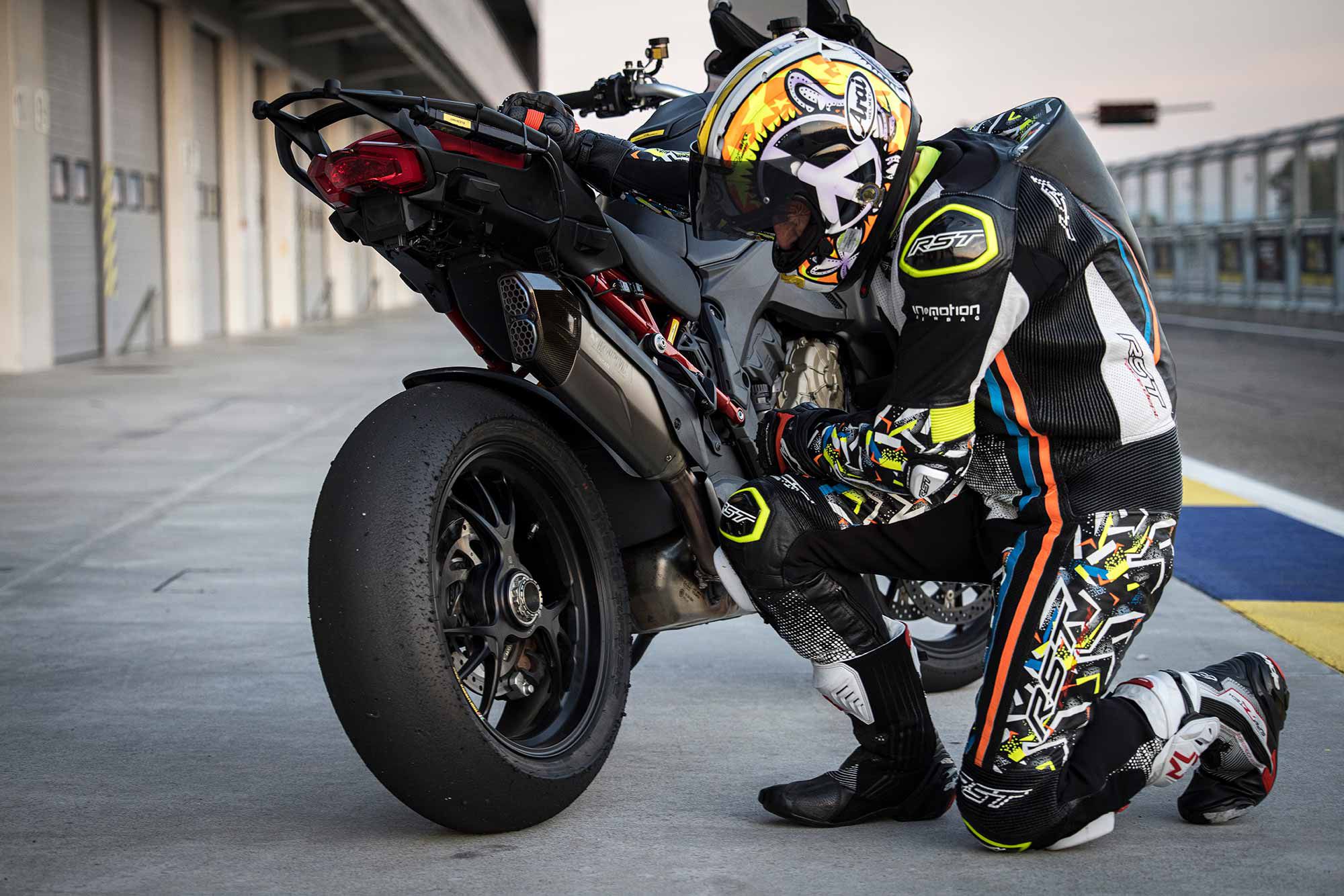
Into Race mode, and the suspension is now catering for track riding on grippy tires. The ride is firmer, preload is up from 16 clicks to 21 clicks. Rider aids are also reduced; in fact, I could have opted to switch them off completely, but as this is a priceless prototype and one of only two in existence, I opted to keep a “safety net” in place.
The difference between Race and Sport mode is instantly evident. There is more chassis control and obviously less fork travel which, with less intrusive lean-sensitive ABS, allows deeper braking.
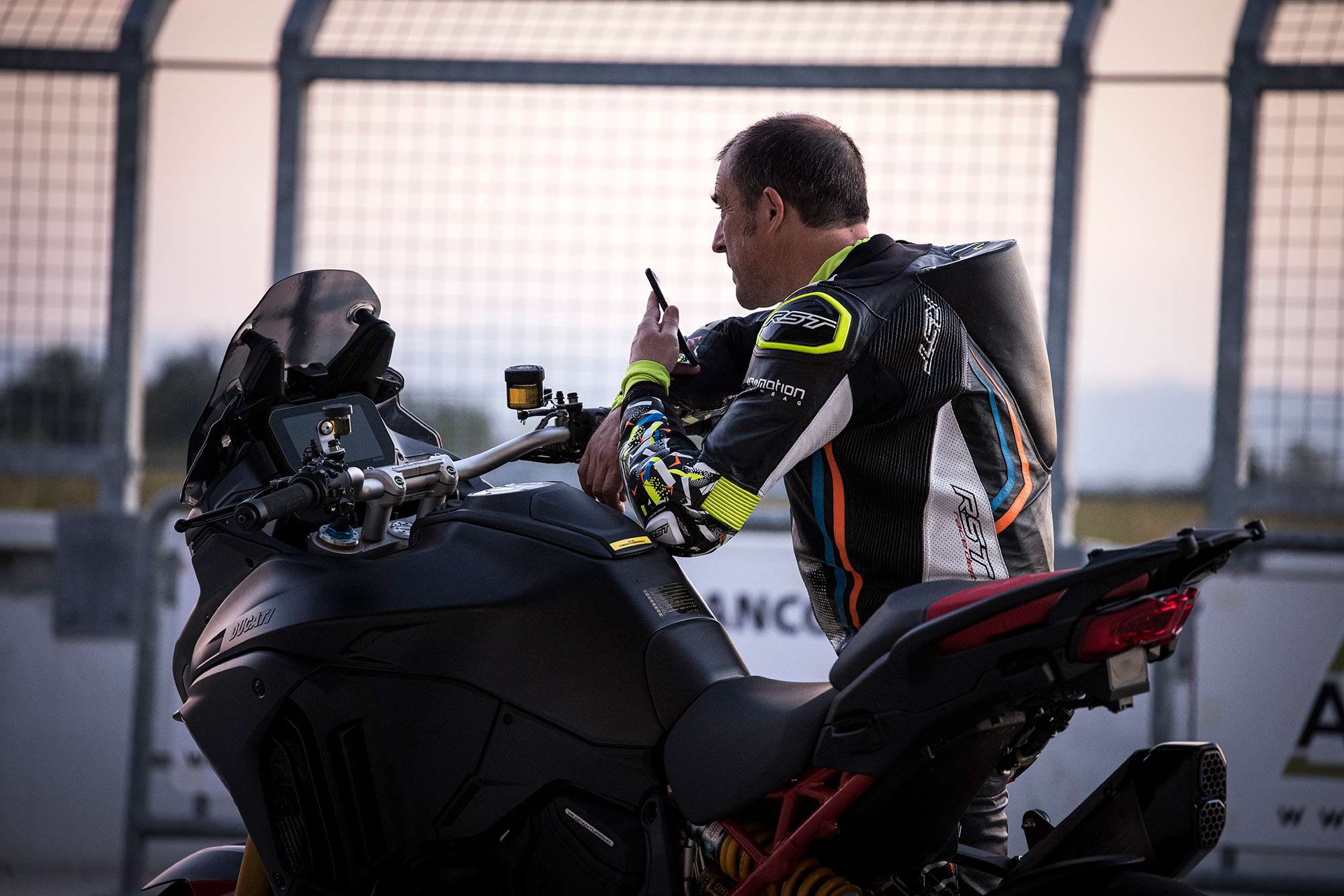
Stability when braking heavily from high speed is reassuring. At extreme lean angles generated by the Pirelli slicks, the pegs still touch down, but they’re not buried in the Italian track as they were in Sport mode.
Changes in direction are now electric as the taut chassis allows me to turn a fraction quicker and get on the power sooner. In Sport mode, there’s more suspension travel and I have to “lift” the bike over the rear shock, then for a fraction of a second let it settle. Now that transition is much quicker, allowing me to get back on the intimidating and usable power early, again still with the rider aids there in the background.
Power output in Sport and Race modes feel comparable, with Race a little sharper at the bottom and the throttle map slightly more aggressive. But again, this isn’t scary Panigale-type power; it’s manageable and usable.
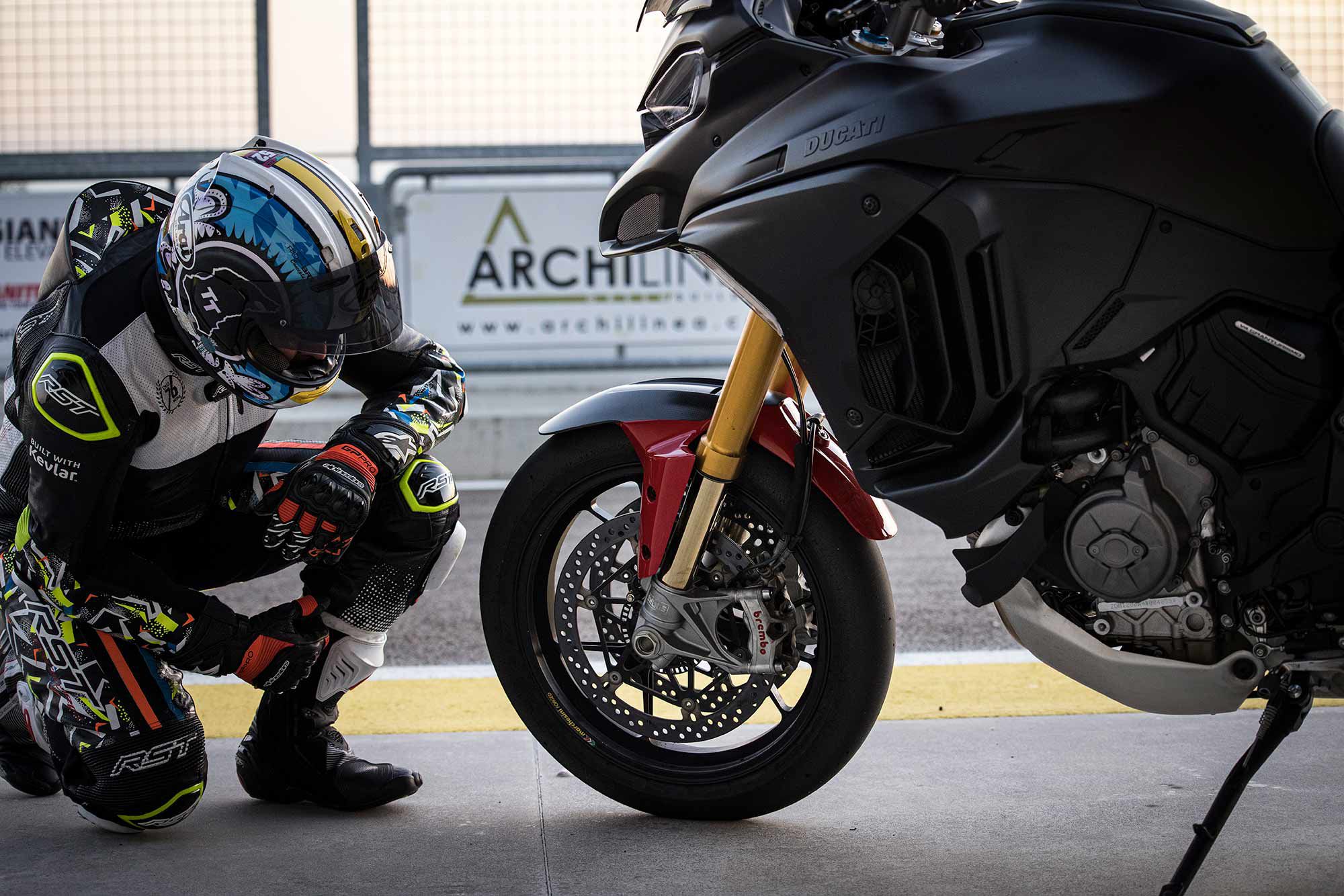
Verdict
We only got a hint of what the new Multistrada V4 Pikes Peak will be like. There’s no spec sheet yet and the development team is still putting the final touches to the bike. But we do know it will be the sportiest Multistrada ever.
For 2022, the new Pikes Peak will be significantly different to its stablemates, with 17-inch wheels, new chassis dimensions, and all-new track focus—effectively an SP version of the Multistrada and only the same in name and engine.
When we eventually see a production Pikes Peak for real, it certainly won’t be intimidated by the trackday fast group and, given that it’s a Multistrada, should deliver a cracking ride home afterward too.
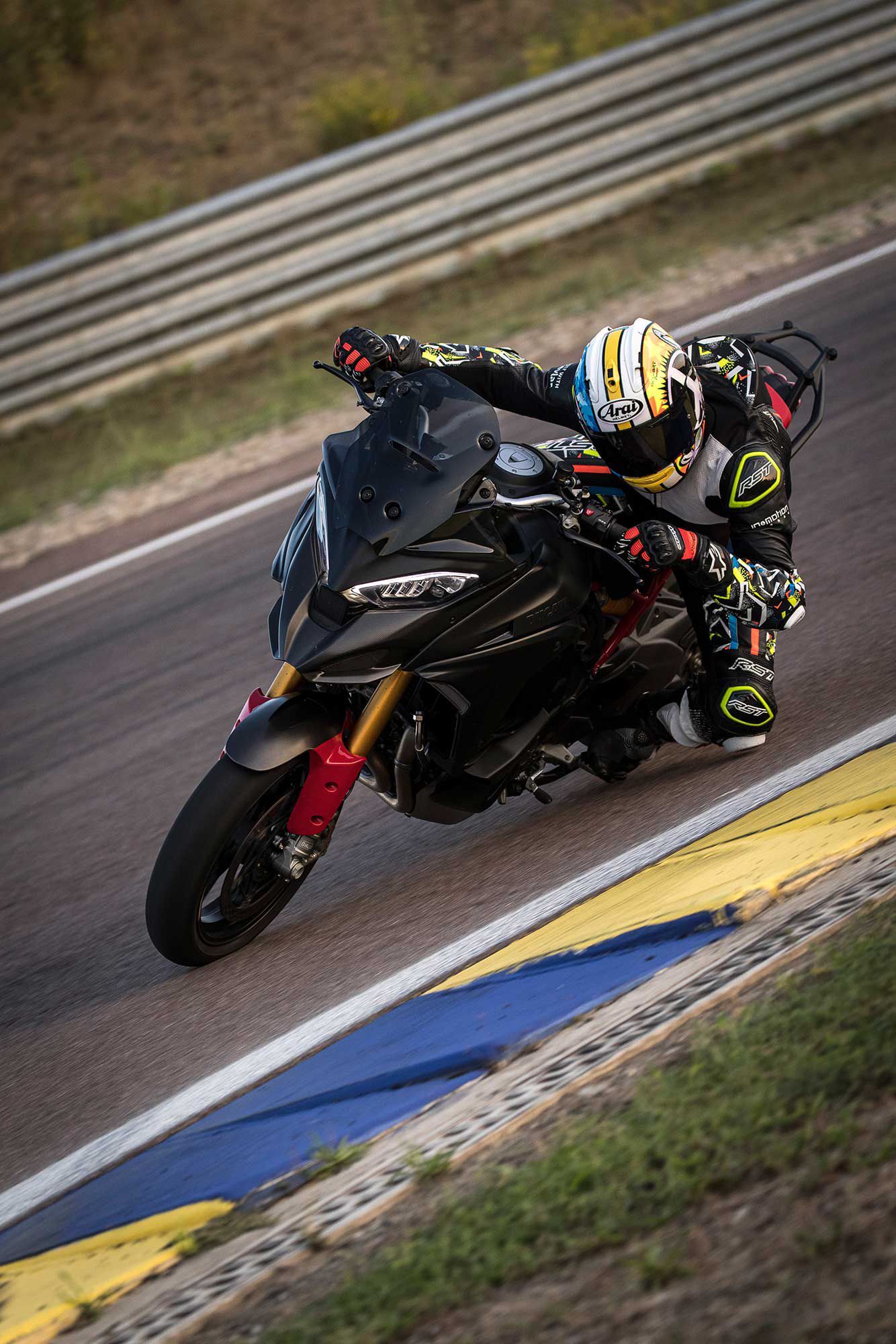
2022 Ducati Multistrada Pikes Peak Technical Specifications and Price
| PRICE | $TBD |
| ENGINE | 1,158cc, DOHC, liquid-cooled V-4; 4-valves/cyl. |
| BORE x STROKE | 83.0 x 53.5mm |
| COMPRESSION RATIO | 14.0:1 |
| FUEL DELIVERY | Fuel injection w/ 46mm throttle bodies, ride-by-wire |
| CLUTCH | Wet, multiplate slipper; hydraulic action |
| TRANSMISSION/FINAL DRIVE | 6-speed/chain |
| CLAIMED HORSEPOWER | 170 bhp @ 10,500 rpm (TBD) |
| CLAIMED TORQUE | 92 lb.-ft. @ 8,750 rpm (TBD) |
| FRAME | aluminium monocoque |
| FRONT SUSPENSION | Öhlins TBDmm inverted fork, electronically adjustable; TBD in. travel |
| REAR SUSPENSION | Öhlins shock, electronically adjustable; TBD in. travel |
| FRONT BRAKE | Radial 4-piston caliper, TBDmm disc w/ Cornering ABS |
| REAR BRAKE | 2-piston caliper, TBDmm disc w/ Cornering ABS |
| WHEELS, FRONT/REAR | 17 x TBD in. / 17 x TBD in. |
| TIRES, FRONT/REAR | Pirelli TBD |
| RAKE/TRAIL | TBD°/TBD in. |
| WHEELBASE | TBD in. |
| SEAT HEIGHT | TBD in. |
| FUEL CAPACITY | TBD gal. |
| CLAIMED CURB WEIGHT | TBD lb. |
| WARRANTY | 2 years, unlimited mileage |
| CONTACT | ducati.com |
Source: MotorCyclistOnline.com
